by Jude Vallette // Oct. 4, 2024
This article is part of our feature topic Accessibility.
Japanese multimedia artist Mari Katayama creates striking self-portraits and soft sculptures that incorporate her body alongside hand-sewn objects, fostering a thoughtful dialogue around society’s normative ideas about what is natural, artificial or correct. Katayama was born with a congenital limb condition known as tibial hemimelia, and had both legs amputated as a child. Her practice is deeply rooted in her lived experience, reflecting themes of physical transformation, her evolving identity as a mother and her fascination with the interplay of beauty and mathematics in natural forms. She has exhibited her work in solo and group exhibitions worldwide and has participated in numerous academic talks and panel discussions. We spoke to Katayama about her approach to creating art that is both deeply personal and universally resonant, her reflections on motherhood and her ongoing collaboration with Italian fashion brand Sergio Rossi, the ‘High Heel Project,’ in which she creates prosthetic legs that allow her to wear high heels, walk and perform on stage.
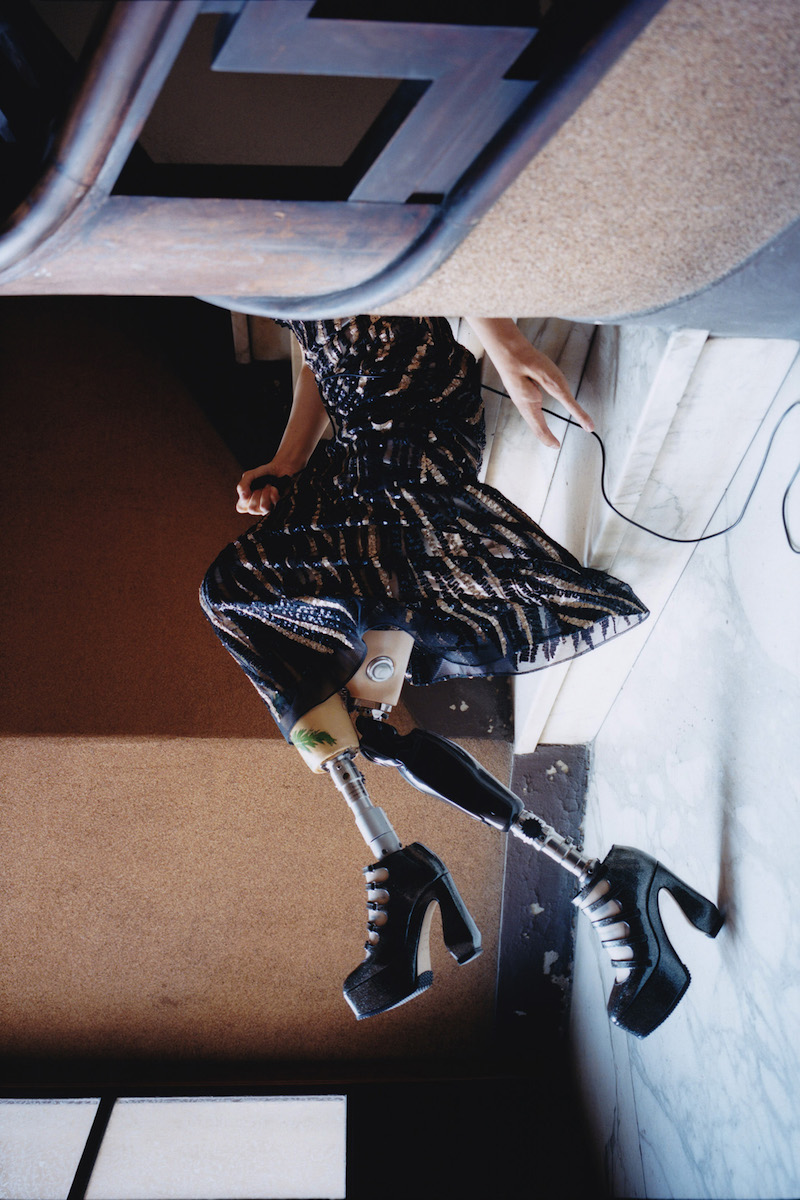
Mari Katayama: ‘Calypso #002,’ 2022 , C-print // © Mari Katayama
Jude Vallette: Your use of prosthetics is a significant aspect of your life and your artwork. How do your prosthetics influence your artistic process, both visually and practically? What message do you aim to communicate by highlighting them in your self-portraits and installations?
Mari Katayama: The prosthetic I use has undeniably impacted my life, and I would be lying if I said otherwise. It’s similar to how I use my voice or hand-sew every art piece—my prosthetic leg is integral to how I navigate the world. It’s part of my everyday life, affecting everything I do. That said, I’ve never considered using the prosthetic itself as an art piece or as a direct means of expression. While it is a part of my body, it’s not something I view as an art object. I don’t think I will ever use my prosthetic in that way.
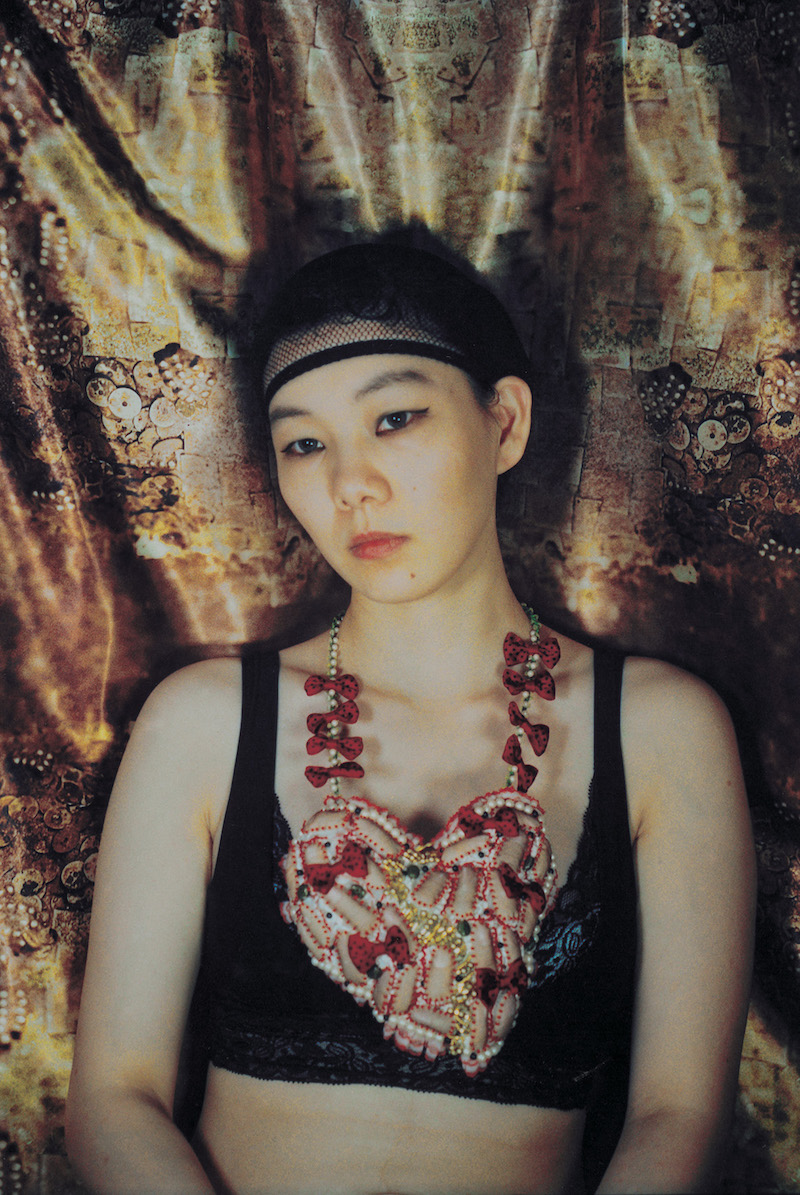
Mari Katayama: ‘cannot turn the clock back #001,’ 2017, C-print // © Mari Katayama
JV: Your work often explores the complex relationship between body image and identity. How has your experience of living with disability influenced the themes and visual elements in your practice? Can you share specific examples from your newer projects that highlight this evolution?
MK: My art is a direct output of everything I’ve experienced in this body. What I see, touch and live through gets translated into my artwork. That’s the essence of my creative process.
My body has certainly changed since I began making art as a teenager—I’ve gone through my 20s and 30s, experienced pregnancy and all the physical changes that come with those stages of life, too. But more than the physical transformations, it’s the experiences, the people I’ve met and the environments I’ve accessed that have shaped my work. My world has expanded beyond the confines of my home, and those broader experiences have influenced my art more profoundly than the physical changes themselves.
When it comes to creating, I approach it with caution, much like the Japanese saying about checking a stone bridge before crossing it. I don’t rush through the process or aim for perfection beyond what feels achievable. Instead, I strive to complete each piece at what I consider 100%, knowing that it reflects my careful and deliberate approach. One of my core principles is that I want to be the one who makes my artwork. That’s why I emphasize hand-sewing or placing tiny shells into frames myself—these steps are crucial to me.
Physically, I’m in good condition—I can walk more than my manager! We often joke about it because I’ll be walking 20,000 steps while my manager is ready to grab a taxi. My physical limitations have always been present, but I work alongside them, and they’ve shaped my relationship with the art-making process.
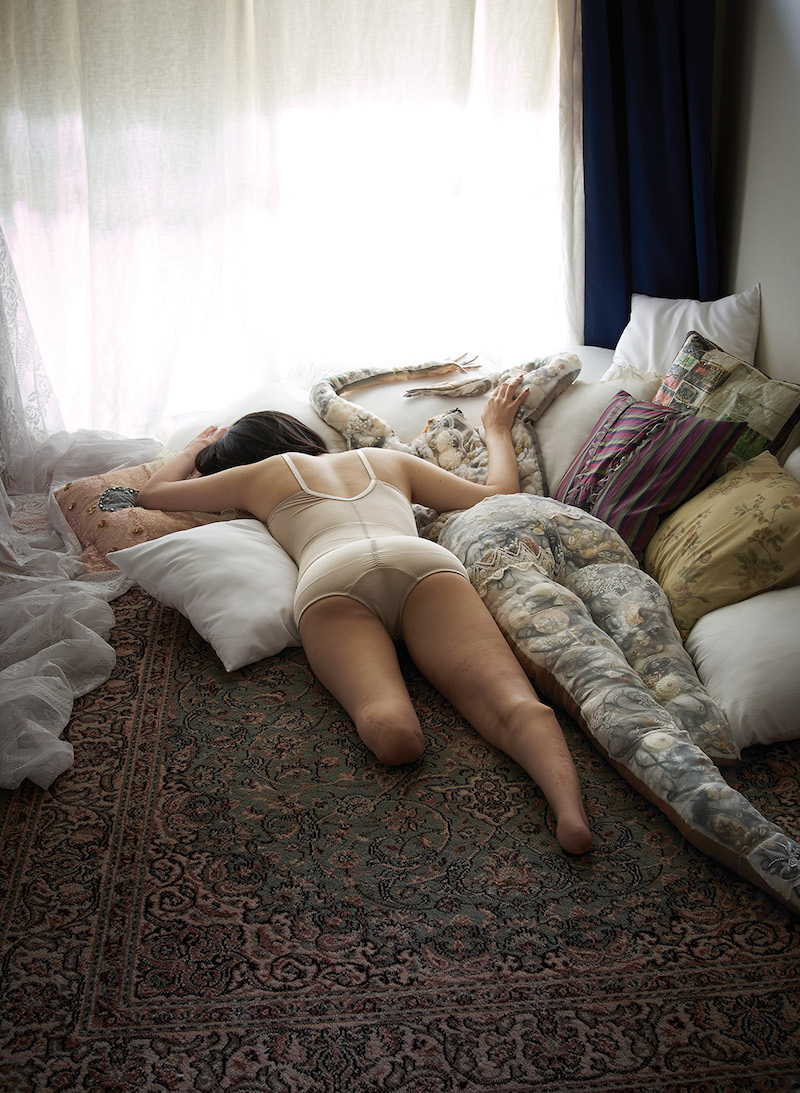
Mari Katayama: ‘Thus I exist #002,’ 2015, C-print // © Mari Katayama
JV: In what ways has having a child influenced your art practice and your sense of self-identity?
MK: Motherhood has profoundly affected my life. When anything significant happens, I reflect on the day my daughter was born. I don’t think I’d be where I am today without that experience. Before she was born, I was a bit careless with my work, and I wasn’t as engaged with the world around me. Now, I see things through her eyes, and that’s opened me up to trying new things and having new experiences. It’s been a big change for me.
Thinking about the future has also shifted. I now consider what life will be like for my daughter, her children and even further into the future. This new perspective makes me think more deeply about my ancestors and the legacy of past generations, spanning hundreds of years. My sense of time has expanded both forward and backward, altering how I see the world.
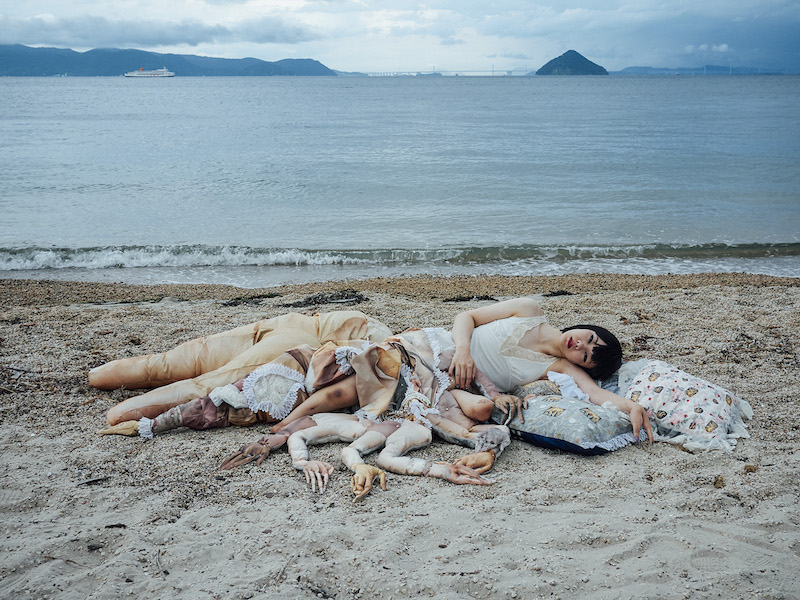
Mari Katayama: ‘bystander #014,’ 2016, C-print // © Mari Katayama
JV: Much of your artwork features recurring objects and motifs, particularly those with maritime themes. What significance do these different objects hold for you? How do you decide which objects to include in your installations?
MK: I was born in a place far from the sea, so whenever my grandpa went to the sea, he always brought back some seashells for me. There is a poem I love by Jean Cocteau that says: “My ear is a seashell, who fondly hears the sound of the sea.”
As a child, I loved picking up seashells, putting them to my ear and listening to the waves. When you cut open a shell, you find the golden ratio, a naturally occurring phenomenon that’s beautifully intricate. I’ve always been fascinated by math and the idea that this golden ratio applies to humans, too. It’s not about makeup or surgery—it’s about how we carry ourselves, how we move and the natural balance we possess. This idea of a natural, intrinsic beauty in human physicality has always captivated me.
I also read that seashells were once used as currency, which adds another layer of meaning for me. When creating installations, I don’t just make a space for my work; I let the existing room guide what I create. I visit the space first, envision what could fit and then start working to ensure the installation complements the area. It’s about adapting my art to the environment rather than forcing the environment to fit my art.
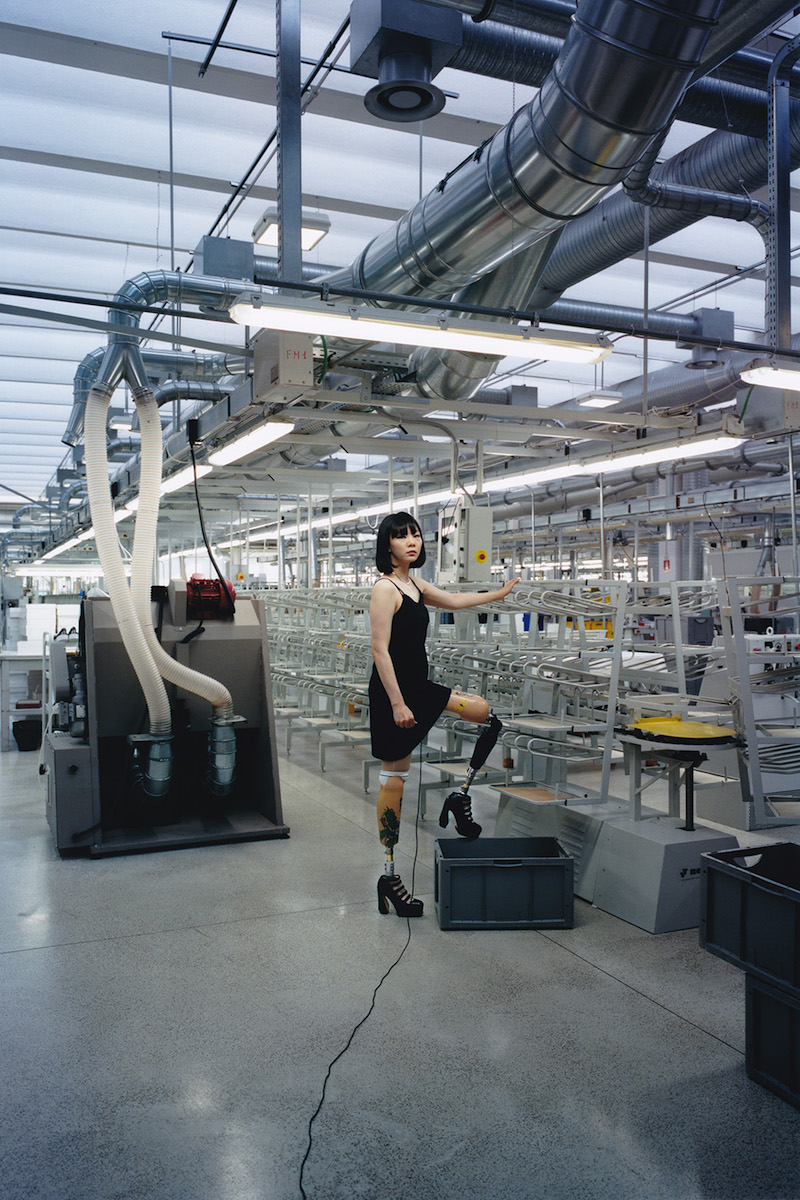
Mari Katayama: ‘high heels called Mari K #001,’ 2022, C-print // © Mari Katayama
JV: One of your ongoing and most well-known projects, the ‘High Heel Project,’ has now evolved to be a collaboration with fashion designer Sergio Rossi. What role does collaboration play in your art practice, and how do you choose your collaborators?
MK: One of the members from Sergio Rossi Japan was a fan of my work and had been attending my exhibitions. During the first phase of the ‘High Heel Project,’ she reached out to me. It was just a brief contact at that time, but when I started thinking about the second phase, our collaboration became official.
The project had been on hold during my pregnancy and the period of giving birth. I even wondered if it would continue at all. But because she was familiar with my work and supportive of it, I realized we could restart it. Her involvement was crucial in reviving the ‘High Heel Project’ for a second phase.
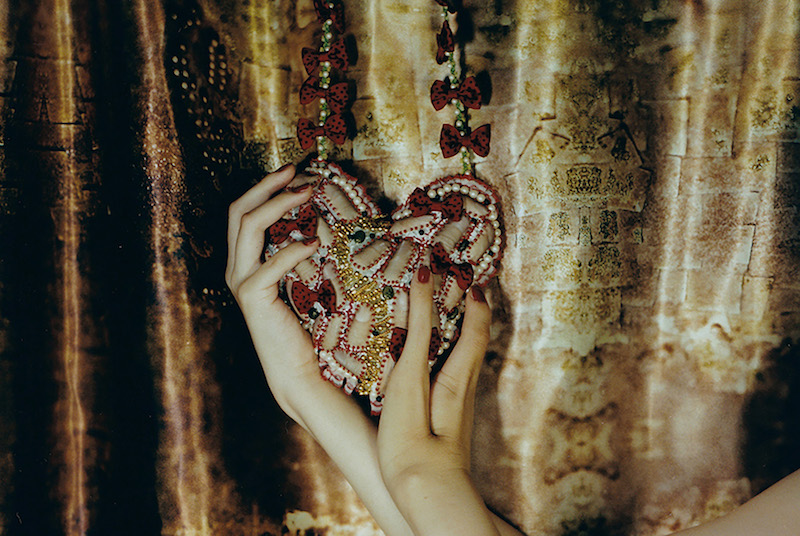
Mari Katayama: ‘cannot turn the clock back #009,’ 2017, C-print // © Mari Katayama
JV: In your artist statement, you mention conceptualizing your body objectively as a material in your art process. How has this approach served as an adaptive strategy in managing your disability, both in your everyday life and in your art career?
MK: Everything I express in my art is based on what I’ve experienced in this body. It’s my story, but the work I create is not just for me. The relationship between my daily life and my art is complex. I create a piece, it goes to an exhibition, it’s seen by people and then it returns to me through feedback—reviews, numbers on the internet and articles written about me. Only after it’s been out in the world does it start to influence my life again. That’s when I interact with my art on a deeper level, and it begins to affect me personally. I often feel like Mari Katayama the artist and Mari Katayama in my everyday life are two different people, almost like having two different faces.



















